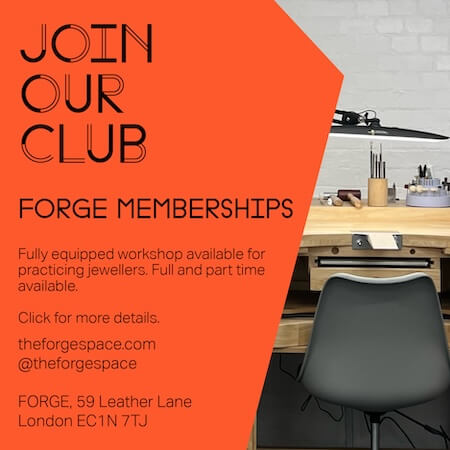Jewellery & Metal Finalists of the Lowe Craft Prize
Reading Time:
1 min {{readingTime}} mins
Loewe has revealed the names of the 29 shortlisted craftsmen for the 2019 edition of the Loewe Foundation Craft Prize. Each finalist’s work will be exhibited at Isamu Noguchi’s indoor stone garden ‘Heaven’ at the Sogetsu Kaikan in Tokyo, from 26 June to 22 July, 2019 writes Ilaria Ruggiero.

The third edition of the Loewe Foundation Craft Prize presents a diverse spectrum of techniques, media and modes of expression and the finalists range from recently graduated and newly emerging artists to well-known names and leaders in their fields. The Loewe Foundation Craft Prize 2019 recognises the shortlisted artists as having made fundamentally important contributions to the development of contemporary craft.
The annual prize was launched by the Loewe Foundation in 2016 to celebrate excellence, artistic merit and newness in modern craftsmanship. This year’s finalists were chosen by a panel of experts from over 2,500 submissions by artists representing more than 100 countries. The number of submissions rose by 44% demonstrating the growing significance and influence of the prize in creative communities at an international level.
The award, which was conceived by creative director Jonathan Anderson, aims to acknowledge the importance of craft in today’s culture and recognise working artists whose talent, vision and will to innovate promise to set a new standard for the future. The prize is a tribute to Loewe’s beginnings as a collective craft workshop in 1846.
For the 2019 edition, a panel of nine experts convened in Madrid for two days to review all the entries to the prize and select the shortlist. In their deliberations, the panel sought to identify the most outstanding works in terms of technical accomplishment, innovation and artistic vision.
From this shortlist, a jury composed of 11 leading figures from the world of design, architecture, journalism, criticism and museum curatorship, including Jennifer Lee, winner of the LFCP 2018, will select the winner of the LFCP 2019. The prize awarded to the winner is 50,000 Euros and the announcement will be made on 25 June 2019, at the opening of the LFCP 2019 exhibition at Isamu Noguchi’s indoor stone garden ‘Heaven’ at the Sogetsu Kaikan in Tokyo.
The jewellers selected are Giampaolo Babetto, famous for using the geometric shape of the cube as his starting point, and for his minimalism and attention to a quiet visual expression, removing any trace of narrative through his commitment to a purity of form; Heeseung Koh, who shows an entirely fresh approach to the material of jewellery. Spontaneous in expression, the work is a study in unexpected and unconventional contrasts of form, colour and material; Ruudt Peters with a body of work combing silver and amber to create pieces that could be described as wearable sculpture; and Giovanni Corvaja, here selected with an ethereal and captivating piece that employs an extraordinary process, developed by the artist, transforming gold into a substance as fine as hair. The work evokes a sense of mystery, putting ancient ideas of alchemy in dialogue with cutting-edge technology.
Metal workers selected are Koichi Io for work which is created using an ancient Japanese technique; Giovanni Corvaja for his gold vessel which uses the material like hair; Junko Mori for her steel Chrysanthemum form; and Kye-Yeon Son for rusted wire work.
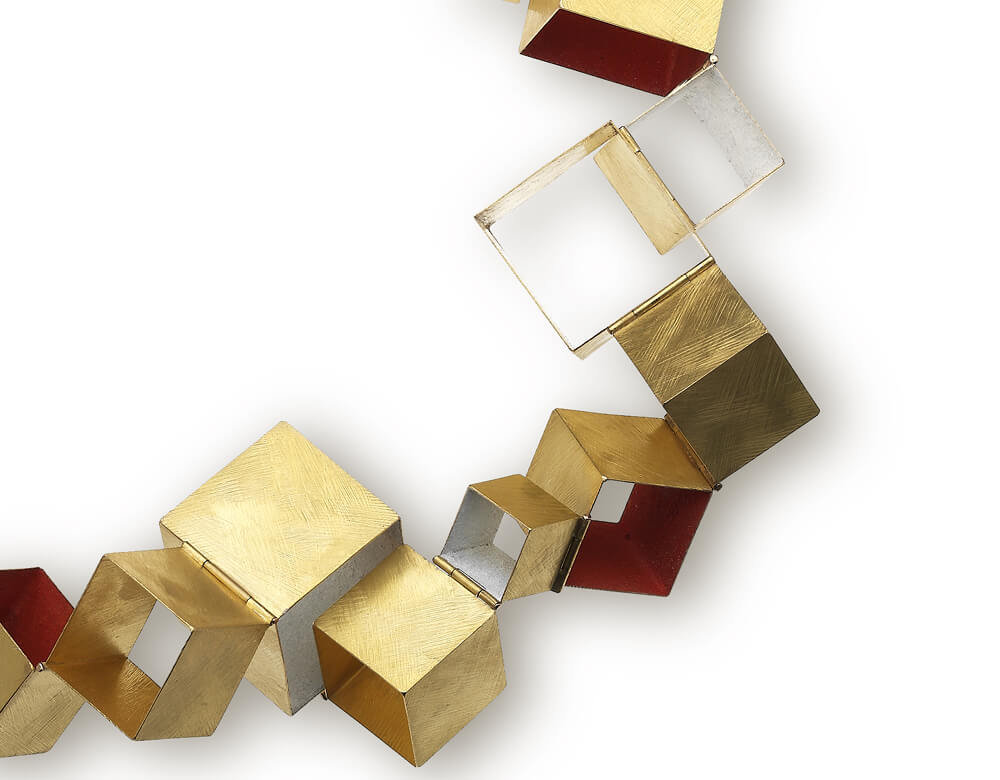
Finalists
The selected finalists for the Loewe Foundation Craft Prize 2019 are (in alphabetical order, with nationality):
- Akiko Hirai (b. Japan lives and works in United Kingdom)
- Andrea Walsh (United Kingdom)
- Annie Turner (United Kingdom)
- Deloss Webber (United States)
- Elke Sada (Germany)
- Gental Ishikuza (Japan)
- Giampaolo Babetto (Italy)
- Giovanni Corvaja (Italy)
- Harry Morgan (United Kingdom)
- Heeseung Koh (Korea)
- Henar Iglesias (Spain)
- Jim Partidge & Liz Walmsley (United Kingdom)
- JingFeng Fang & Mi Dong (China)
- John Eric Byers (United States)
- Jokum Lind Jensen (b. Denmark, lives and works in Sweden)
- Junko Mori (b. Japan, lives and works in United Kingdom)
- Kazuhito Takadoi (b. Japan, lives and works in United Kingdom)
- Koichi lo (Japan)
- Kye-Yeon Son (b. Korea, lives and works in Canada)
- Youngsoon Lee (Korea)
- Masanori Nishikawa (Japan)
- Mayu Nakata (Japan)
- Michal Fargo (b. Israel, lives and works in Germany)
- Minhee Kim (b. Korea, lives and works in United Kingdom)
- Ruudt Peters (Netherlands)
- Sachi Fujikake (Japan)
- Shozo Michikawa (Japan)
- Sophie Rowley (b. New Zealand, lives and works in Germany)
- Tomonari Hashimoto (Japan)
Jewellery & Metalwork Finalists

Kye-Yeon Son
Country of entry: Canada
Name of work: 'Innatus Forma 2018-1'
Category: Metal
Materials: Steel wire, rust, wax finish
Inspired by the forest in autumn and winter, this work is created by using rusted materials that look delicate but are immensely strong. The bold use of colour demonstrates a personal visual language but is also inherent to the metal wire of the work itself. Organic and dynamic in appearance, the piece uses technically unconventional methods to reveal the full potential of its materials.

Junko Mori
Country of entry: United Kingdom
Name of work: 'Propagation Project; Nigella Chrysanthemum'
Category: Metal
Materials: Wax-coated, forged mild steel
Demonstrating a tremendous commitment to detail through a painstaking process, Mori’s delicate use of steel creates a sculptural piece full of movement. Thousands of steel components are put together piece by piece in a repetitive act that allows for accident and creativity as the work grows almost like a mutation. Human in scale, her technical virtuosity creates an object that is unlike any other, alive with an energy that is both delicate and vibrant.
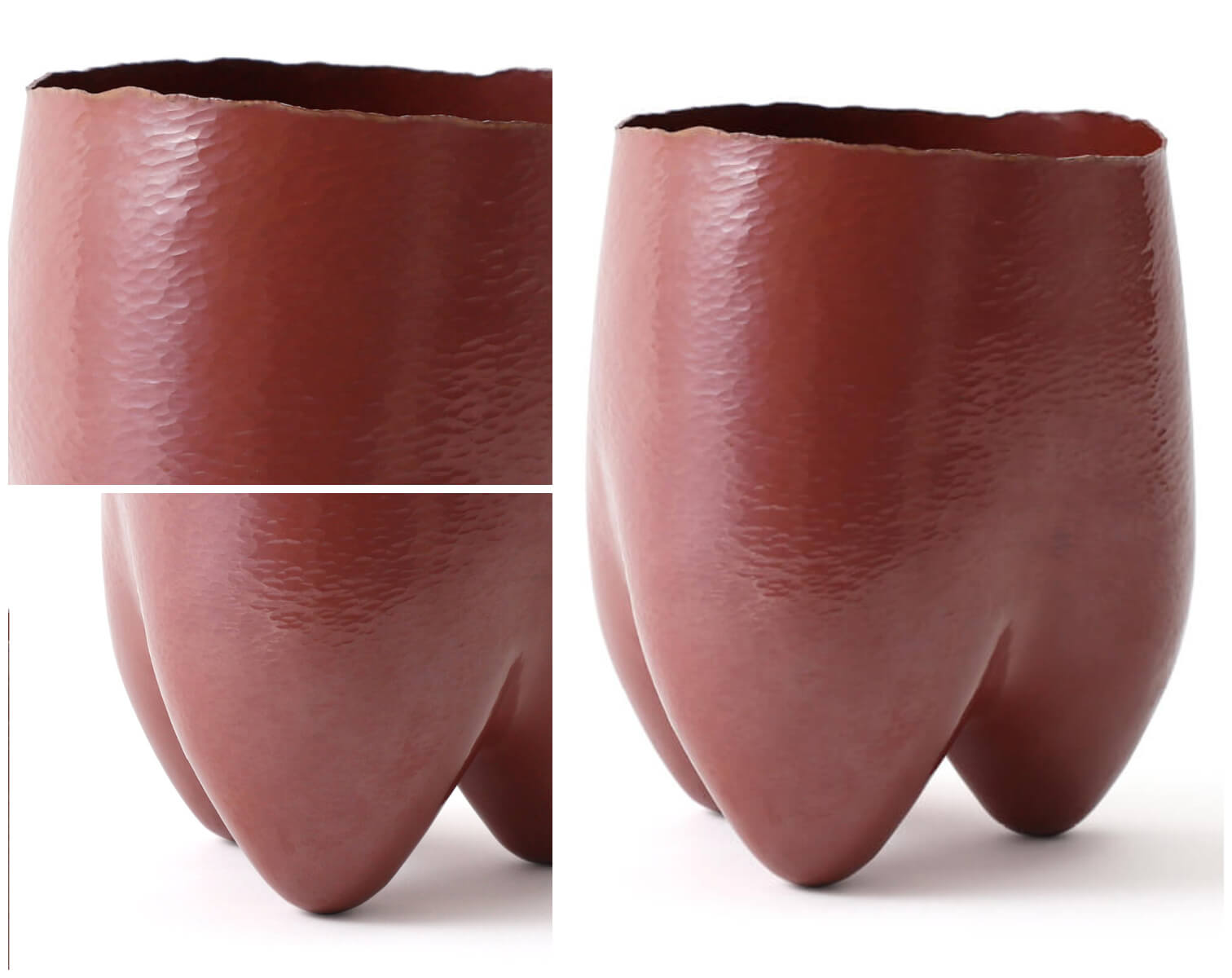
Koichi Io
Country of entry: Japan
Name of work: 'Three Legs Vase'
Category: Metal
Materials: Patinated copper
Io’s work is made from a single sheet of metal formed by hand raising - a 4,000-year-old technique that is still practiced today. The technical mastery he employs is such that the work looks effortless and the material almost unrecognisable. A layer of surface lacquer creates a vivid patina and ful ls its status as a work that is not only masterful but also full of character.

Giovanni Corvaja
Country of entry: Italy
Name of work: 'Mandala bowl'
Category: Other
Materials: 18ct Gold
An ethereal and captivating piece that employs an extraordinary process developed by the artist, transforming gold into a substance as ne as hair. This gold bre is then spun together to create a bowl- shaped object. The work presents a marriage of science and craft that is small in scale and humble in form but monumental in achievement and expression of value. The work evokes a sense of mystery, putting ancient ideas of alchemy in dialogue with cutting-edge technology.
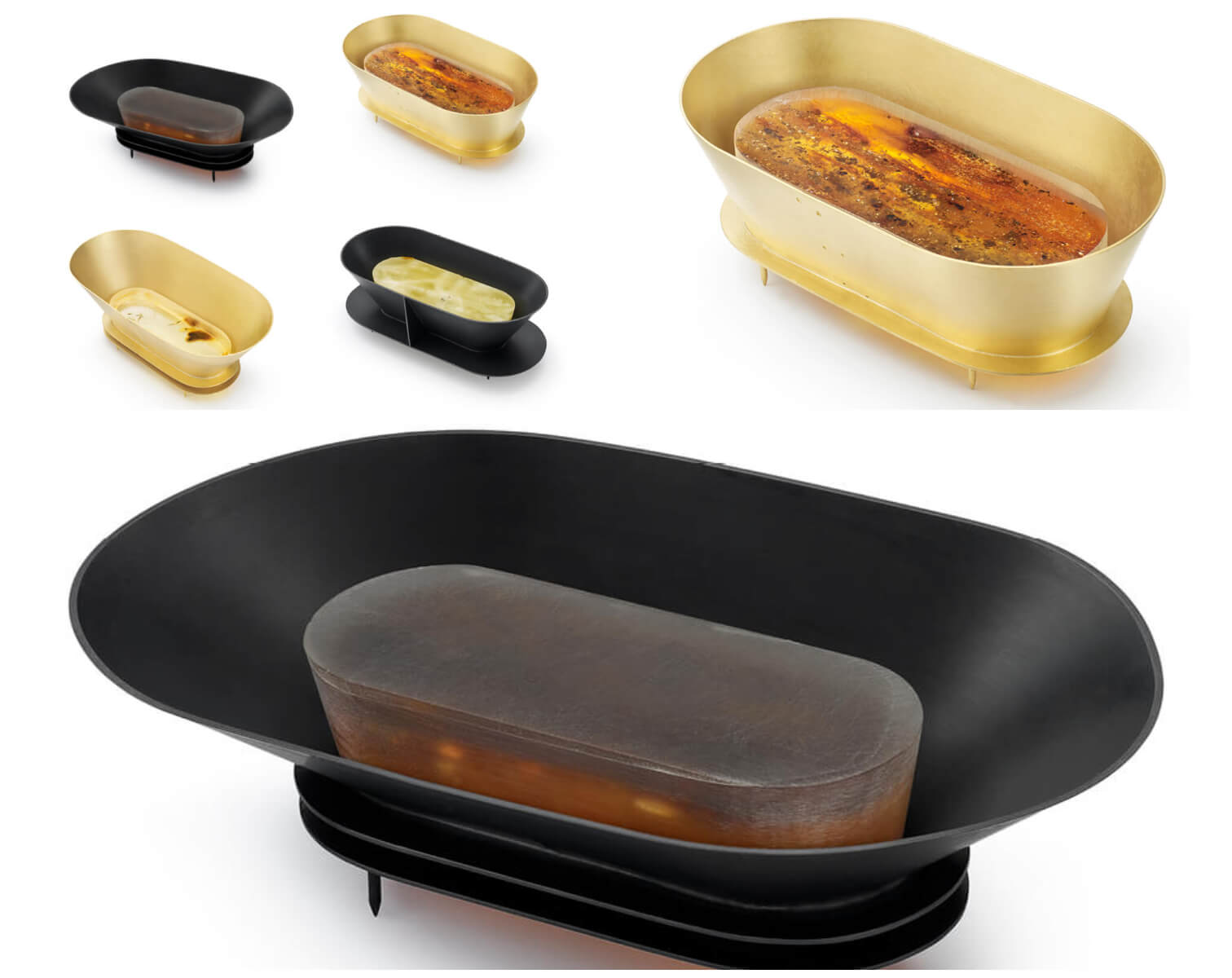
Ruudt Peters
Country of entry: Netherlands
Name of work: 'Suctus'
Category: Jewellery
Materials: Silver / Amber, in different shapes
Using the language of minimalism Peters’ work asks fundamental questions about transformation, where we come from and how we are alive. Silver and amber are combined in these works to create pieces that could be described as wearable sculpture. The sophisticated visual vocabulary surpasses what would conventionally be described as jewellery and brings form, more usually found in a museum or gallery, to the personal space of the body.
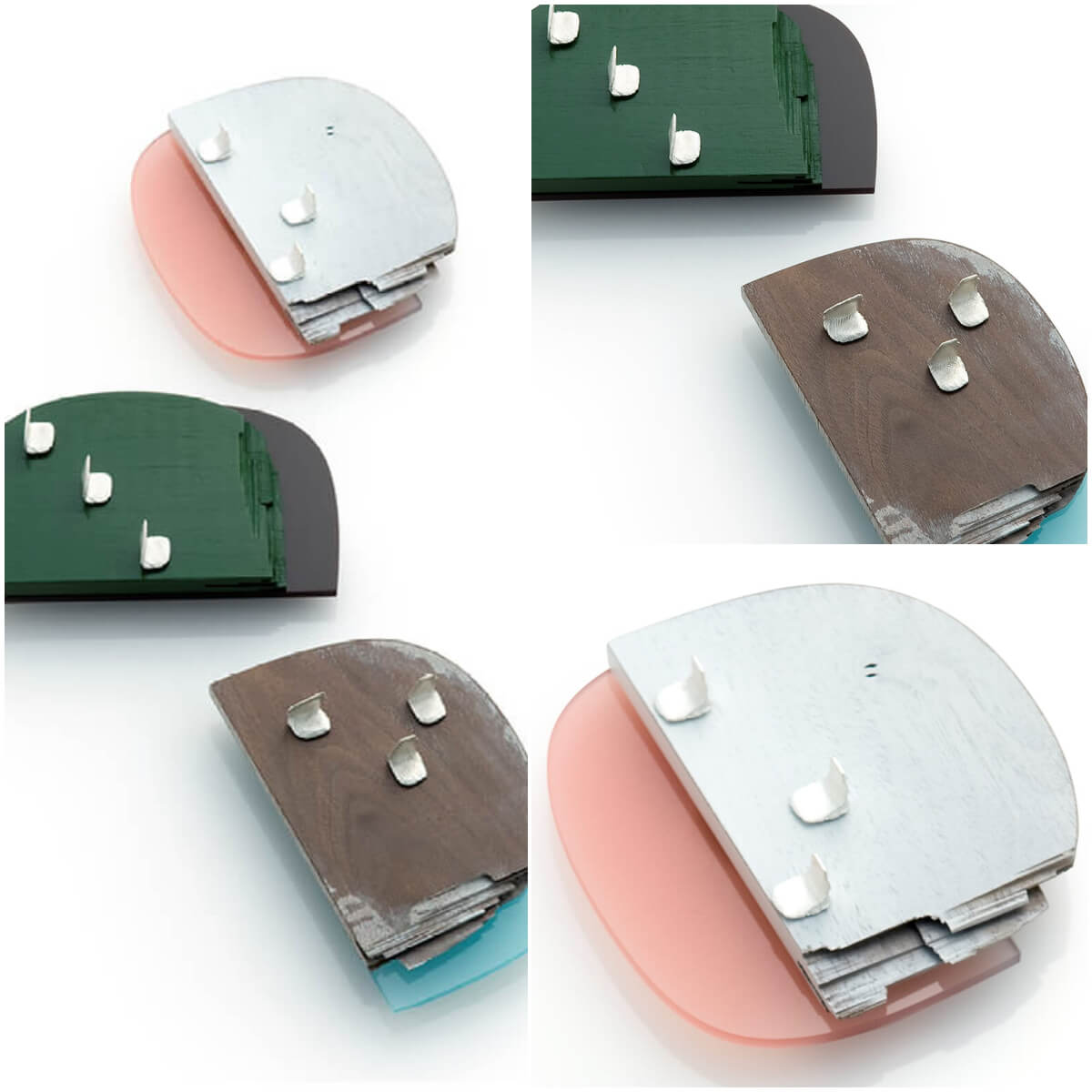
Heeseung Koh
Country of entry: Korea, Republic of
Name of work: 'A regular sign'
Category: Jewellery
Materials: Walnut, acrylic, 925 silver, paint
Made from wood and plastic, Koh shows an entirely fresh approach to the material of jewellery. Spontaneous in expression, the work is a study in unexpected and unconventional contrasts of form, colour and material.
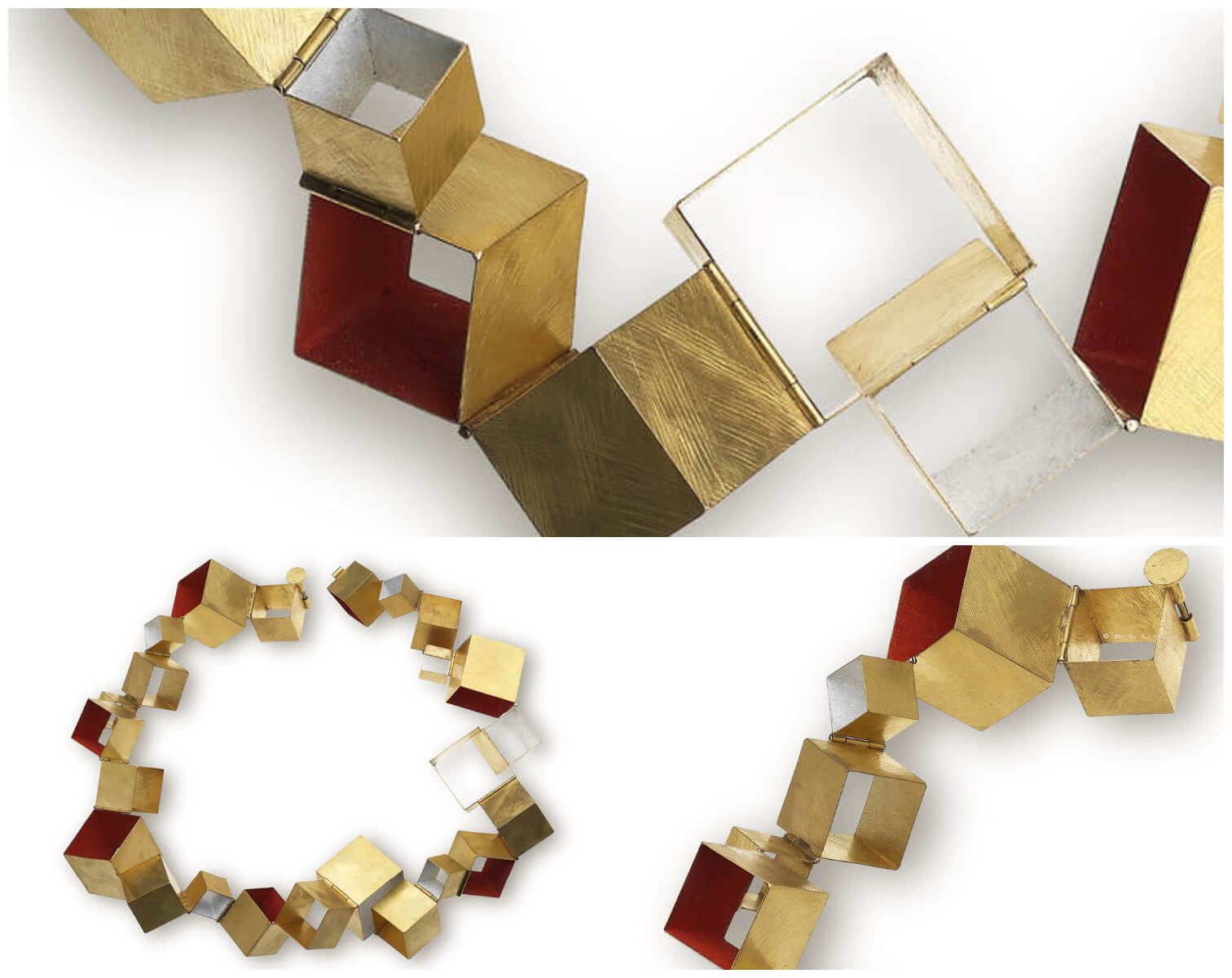
Giampaolo Babetto
Country of entry: Italy
Name of work: 'Collana'
Category: Jewellery
Materials: Gold 750, pigment
Using the geometric shape of the cube as his starting point, Babetto manipulates size and colour to create a necklace of harmonic form. A dynamic composition of equilibrium with underlying colour, the work demonstrates Babetto’s relationship to minimalism and attention to a quiet visual expression, removing any trace of narrative through his commitment to a purity of form.
The Loewe Foundation was established as a private cultural foundation in 1988 by Enrique Loewe, a fourth-generation member of LOEWE’s founding family. Today, under the direction of his daughter Sheila Loewe, the Foundation continues to promote creativity, organise educational programs and protect cultural heritage in the elds of poetry, dance, photography, design and craft. The Foundation was awarded the Gold Medal for Merit in the Fine Arts by the Spanish government in 2002.
About the Contributing Writer

Ilaria Ruggiero is a cultural manager and curator working in the field of contemporary art. She is the founder of Adornment - Curating Contemporary Art Jewelry, a curatorial integrated project dedicated to contemporary art jewelry. It aims to develop the knowledge and consciousness of contemporary jewelry as artistic discipline and as ground search for technique, aesthetics, and philosophy.
Author:
Published:






